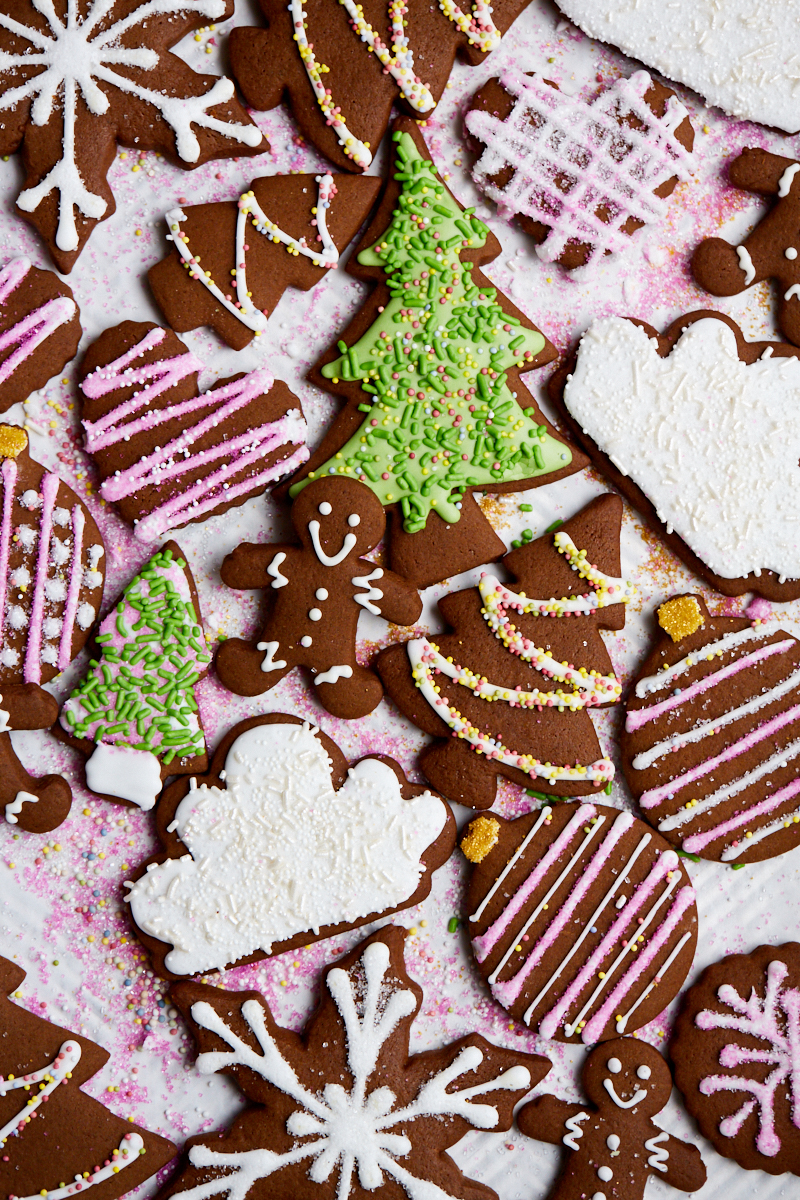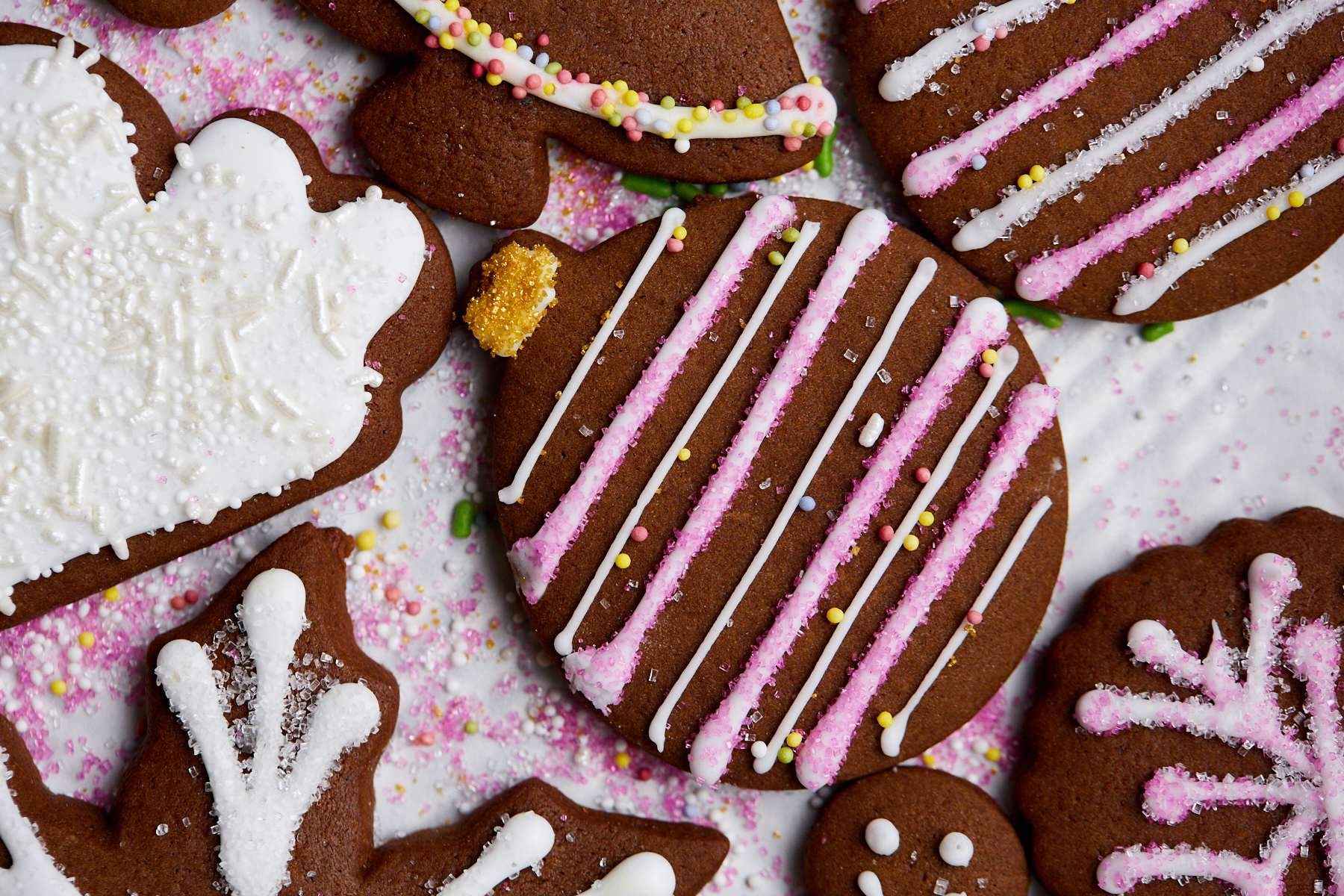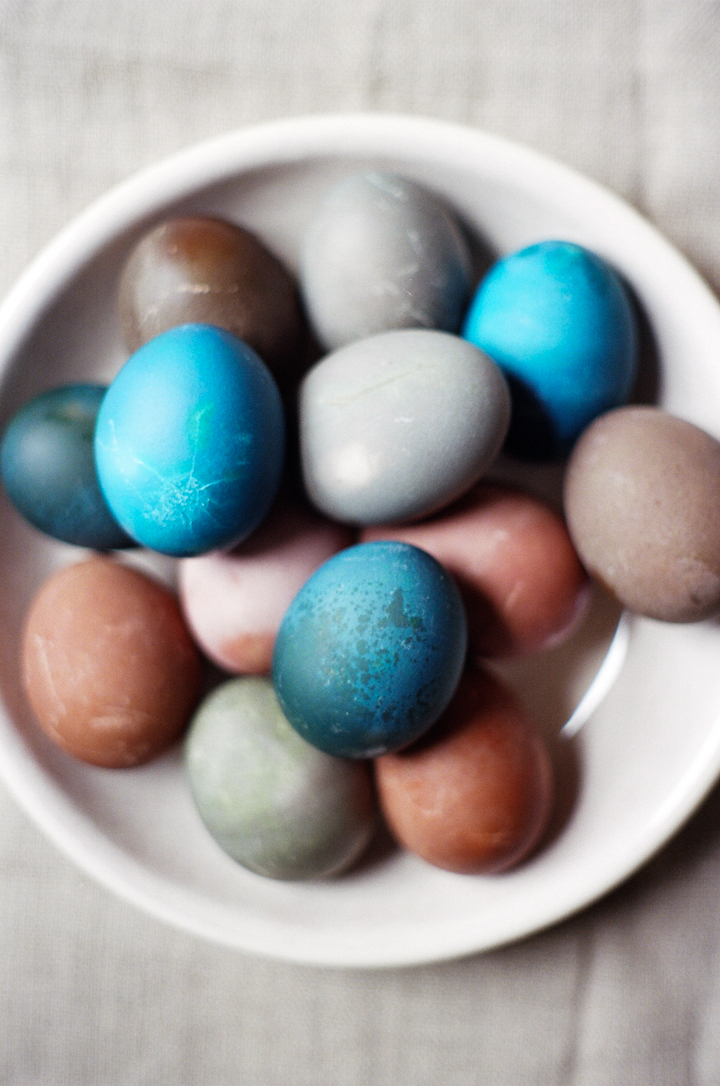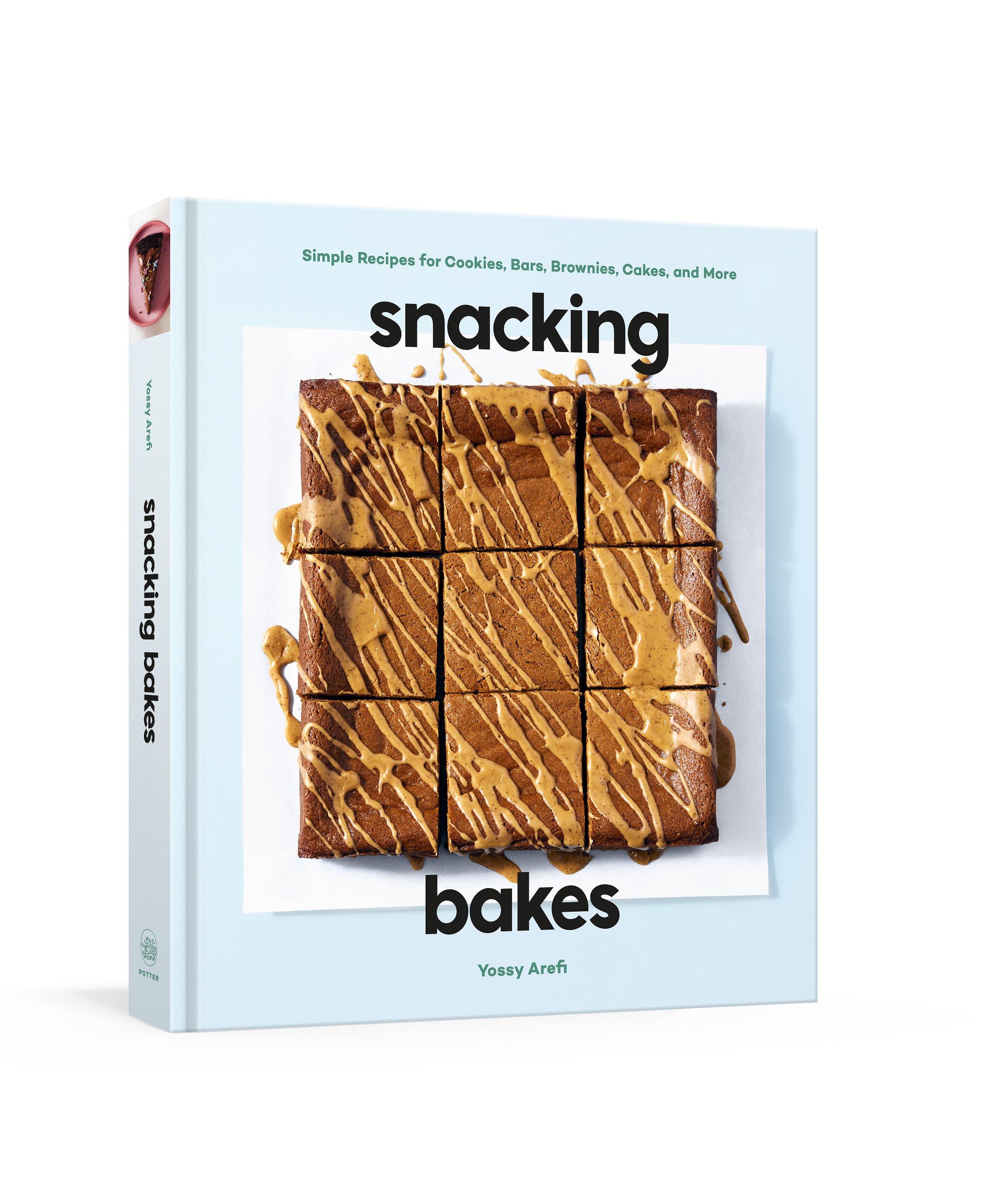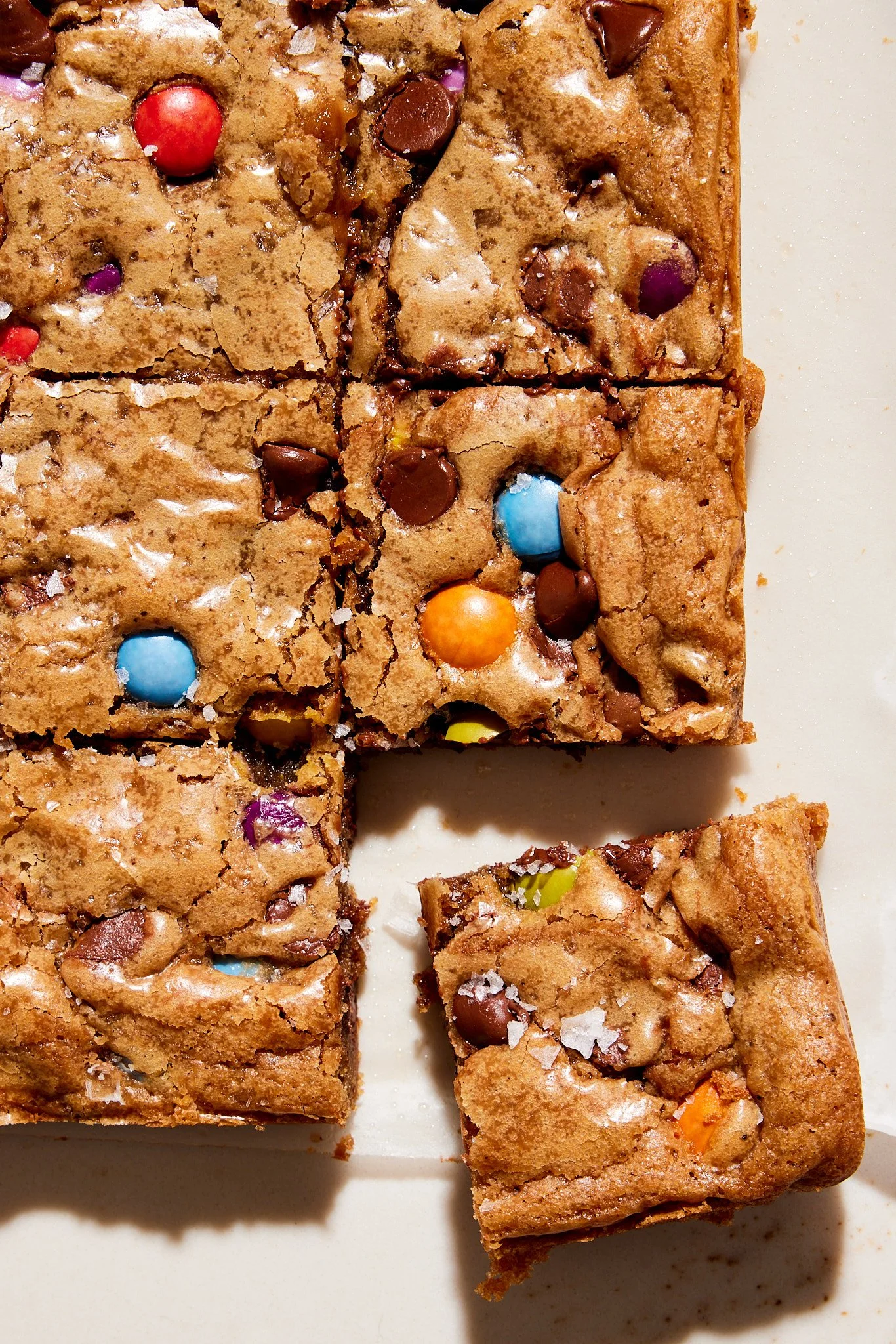Gingerbread Cookies
/My favorite gingerbread cookies have been up on the site, but a little hidden within another post, for a long time. So, this year I decided to give them a little refresh and some new fun photos. These can be made into cookie ornaments too! Just make sure to bake them for an extra minute or two, until they are crisp and dark brown, and don’t forget to poke a hole in the cookies before baking. I love the contrast of the deep golden cookies and white icing so I tend to ice these guys really simply with lines and dots of royal icing and lots of sparkly sanding sugar.
Gingerbread Cookies with Royal Icing
makes about 3 dozen 3-inch cookies
adapted from Simply Recipes
3 1/4 cups (415g) all-purpose flour
3/4 teaspoon baking soda
2 teaspoons ground ginger
2 teaspoons ground cinnamon
1/2 teaspoon ground cardamom
1/4 teaspoon finely grated nutmeg
1/4 teaspoon finely ground black pepper
1/4 teaspoon allspice
1 teaspoon kosher salt
14 tablespoons (200g) unsalted butter, softened
1/2 cup (110g) packed dark brown sugar
1 large egg
1/2 cup unsulfured molasses
In a large bowl, whisk the flour, baking soda, salt and spices together.
In a stand mixer, cream the butter and sugar together until light and fluffy. Add the egg, then the molasses and mix until well combined. With the mixer on low speed, gradually add the flour mixture and mix until thoroughly combined. Divide the dough in half, wrap each half in plastic and refrigerate for at least one hour before rolling.
Heat oven to 350ºF and line two baking sheets with parchment paper.
Working with 1/2 of the dough at a time roll the dough 1/8-1/4-inch thick on a lightly floured surface using a lightly floured rolling pin roll. Use a cookie cutter or stencil to cut out desired shapes then place them on the prepared baking sheets. For cookie ornaments, use a skewer to poke a hole through the top of the cookies before baking. Bake for 8-10 minutes or until the edges of the cookies have just barely begun to brown. For cookie ornaments bake the cookies until they are lightly browned all over and firm to the touch. Cool the cookies on the sheet pans for a few minutes and then transfer to a cooling rack to cool completely. Decorate as desired.
Royal Icing
1 pound confectioners sugar, sifted
6 tablespoons pasteurized egg whites
1 teaspoon lemon juice
1 teaspoon vanilla extract
pinch salt
For the Icing
In the bowl of a stand mixer fitted with the whisk attachment combine all of the ingredients. Whisk on low speed until the sugar is moistened, then turn the mixer up to medium and whisk until smooth and glossy.
For piping lines and shapes you’ll want thick icing. When you lift the whisk out of the bowl the icing should flow in thick ribbons that will hold their shape when they fall into the bowl below. Add a bit more confectioner’s sugar to the mixture if necessary to achieve this texture. Fill a piping bag with the icing and have fun!
For flooding and complete coverage of the cookies you’ll want thinner icing that holds its shape for a few seconds, then melts into the icing in the bowl. Add a bit more water, one teaspoon at a time to achieve this texture. Color the icing as desired.
Use the icing right away or store in an airtight container, with a piece of plastic wrap pressed against the surface to prevent a skin from forming, in the refrigerator for up to 3 days. Stir until smooth before using. Color the icing as desired.,
Royal Icing Tips and Tricks
Fit a piping bag with a small round tip #1 or #2 to pipe lines and shapes and/or another piping bag with a slightly larger tip #3 or #4 for flooding. Fill each bag with the corresponding icing and have fun! Practice on a piece of parchment paper if you are nervous, but truly if you think you messed up - just cover your cookies with sprinkles!
For the trees in this post I used the flooding icing to draw a line around the border of each cookie, then filled it in completely and sprinkled to my heart’s content. After the trees had dried slightly I went back and used the piping icing to draw the trunks.
You can also use a spoon to cover the cookies with thinner flooding icing or dip them, have fun! Don’t worry to much about it!
If you are adding sanding sugar or sprinkles to your iced cookies you’ll want to add them just after you pipe the icing. Royal icing will develop a dry skin very quickly, so have your sprinkles at the ready.
If you’d like to pipe lines that sit on top on top of flooded cookies, let the flooding icing dry all of the way or the lines will melt into the flooded icing.
In any case make sure to let the cookies dry all of the way, uncovered, before stacking or packaging, I like to leave mine overnight.

